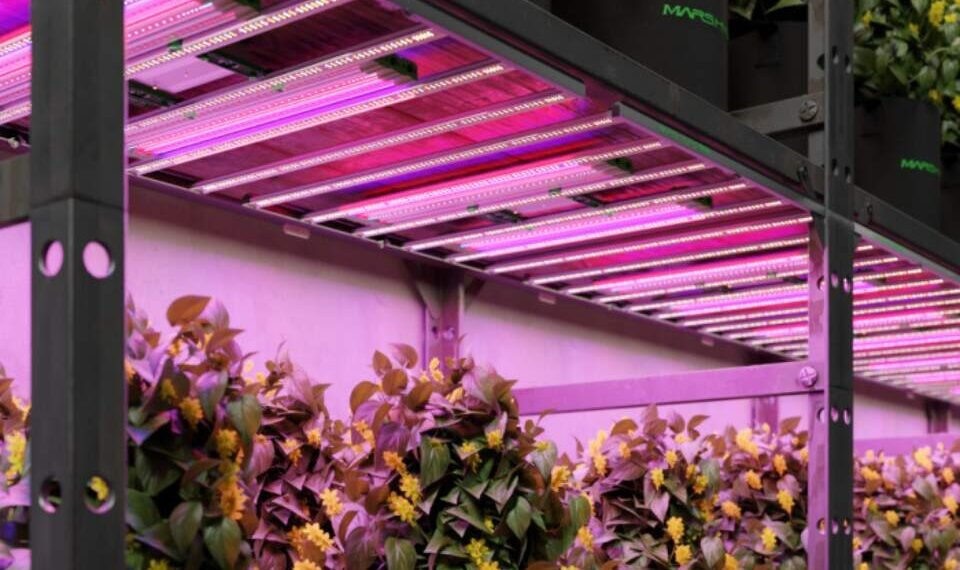Light is the lifeblood of plants, driving the process of photosynthesis and influencing their overall health. However, not all lighting conditions are optimal for plant growth, especially in indoor or greenhouse settings. This is where supplemental grow lights come into play. These additional lights, such as UV (ultraviolet) and IR (infrared), help enhance plant development by compensating for missing light wavelengths.
What Is Supplemental Grow Lights
Supplemental grow lights are additional artificial light sources designed to complement a plant’s primary lighting setup. Unlike standard grow lights, supplemental lights deliver specific wavelengths that may be missing from the primary spectrum. By filling these gaps, they help optimize plant health, enhance growth efficiency, and increase overall yields at different stages of development.
Types of Supplemental Grow Lights
Supplemental grow lights play a crucial role in enhancing plant growth by providing specific light wavelengths that complement primary lighting systems. Here is an overview of the key types:
UV Light
Ultraviolet (UV) light stimulates the production of secondary metabolites, such as flavonoids and phenolics, which enhance plant defense mechanisms and antioxidant activity. Additionally, UV exposure increases the synthesis of essential oils and resins, which improve flavor, aroma, and active compound concentrations, particularly during the flowering stage.
Infrared (IR) Light
Infrared (IR) light plays a crucial role in plant morphology by promoting stem elongation, seed germination, leaf expansion, and nighttime metabolic processes. It also facilitates uniform fruit ripening by providing heat energy essential for development. However, excessive IR exposure can result in overheating or premature flowering, potentially compromising plant health.
Blue Light
Blue light enhances chlorophyll production, leading to more efficient photosynthesis. It encourages strong root systems and compact foliage, preventing plants from becoming overly tall or leggy. Blue light is particularly beneficial during the early growth stages when plants require energy for structural development and leaf expansion.
Red Light
Red light is essential during the flowering and fruiting stages, as it significantly influences photosynthesis efficiency and reproductive processes. It interacts with phytochromes to regulate flowering cycles, making it indispensable for mature plants. When combined with far-red light, red light further optimizes flowering and fruiting outcomes by balancing hormonal activity and enhancing crop performance.
Choosing the Right Supplemental Grow Light
Factors to Consider
Type of Plants Being Grown:
- Leafy greens like lettuce and spinach thrive under blue-dominant light for vegetative growth.
- Flowering plants such as tomatoes, peppers, or cannabis benefit from red and far-red light during their reproductive stages.
- Specialty crops like herbs and medicinal plants may require UV light to enhance secondary metabolite production.
Growth Stage Requirements:
- Seedling Stage: Blue light is critical for promoting root growth and compact foliage.
- Vegetative Stage: A combination of blue and red light supports robust leaf expansion and stem development.
- Flowering/Fruiting Stage: Red and far-red light plays a key role in stimulating flowering, fruiting, and ripening.
Intensity and Duration of Light Exposure
Light intensity should match a plant’s tolerance to avoid stress or damage, with a PAR meter ensuring proper levels at the canopy. Light duration must align with the plant’s photoperiodic needs, while UV and IR lights should be used sparingly to prevent harm like leaf damage or growth issues.
Best Supplemental Light Combinations
UV + IR for Overall Plant Health
- UV light enhances secondary metabolite production, improving disease resistance, flavor, aroma, and nutritional content.
- IR light promotes stem elongation, seed germination, and uniform fruit ripening while supporting nighttime metabolic processes.
Red + Blue for Vegetative and Flowering Growth
- Blue light is ideal for early-stage growth as it encourages strong roots and compact foliage.
- Red light is essential for flowering and fruiting stages, helping plants transition from vegetative growth to reproduction.
Placement and Usage Time
UV and IR lights are powerful tools that require careful positioning to maximize their benefits while preventing plant damage. UV lights should be placed 12–24 inches above the canopy to prevent leaf burn while still delivering their beneficial effects. IR lights should be positioned to provide warmth without causing overheating, ensuring plants receive the right balance of heat energy.
To avoid overexposure, regularly monitor plants for signs such as leaf curling, discoloration, or stunted growth, and adjust the light distance or intensity as needed. Using timers can help regulate exposure, especially for UV and far-red lights, which are most effective in controlled bursts of 1–2 hours per day.
For even light distribution, consider using vertical side lighting or angled fixtures to reach shaded areas and promote uniform plant development. This ensures that all parts of the plant receive adequate light for optimal growth and health.
Conclusion
Supplemental grow lights play a crucial role in optimizing plant growth, especially for indoor and greenhouse cultivation. By incorporating UV, IR, and other supplemental wavelengths, growers can enhance photosynthesis, strengthen plant structure, and boost yields. Proper selection and usage of these lights will maximize their benefits and ensure healthy, thriving plants.
















